Abstract
Resting cells of Saccharomyces cerevisiae Y25 were heated at 56 degrees C for 0 to 2 min. Respiratory activity of the cells reflected the severity of the heat stress. The endogenous respiration was approximately 50 microliter of O2/mg per h for cells heated for 2 min at 56 degrees C as compared with 2 microliter of O2/mg per h for nonheated cells. There was a distinct decrease in respiration after 1 to 3 h, and after 20 h the respiration rate of heated cells was less than that of nonheated cells. Along with increased rates of endogenous respiration, respiratory quotients of cells were altered after heat stress. Addition of 2,4-dinitrophenol stimulated O2 (uptake) in nonheated cells but decreased O2 (uptake) of heated cells. Due to the high rate of endogenous respiration, addition of glucose resulted in no substantial change in the rate of respiration of heated cells. However, addition of glucose prolonged the presence of the high rates of respiration observed in heated cells.
Full text
PDF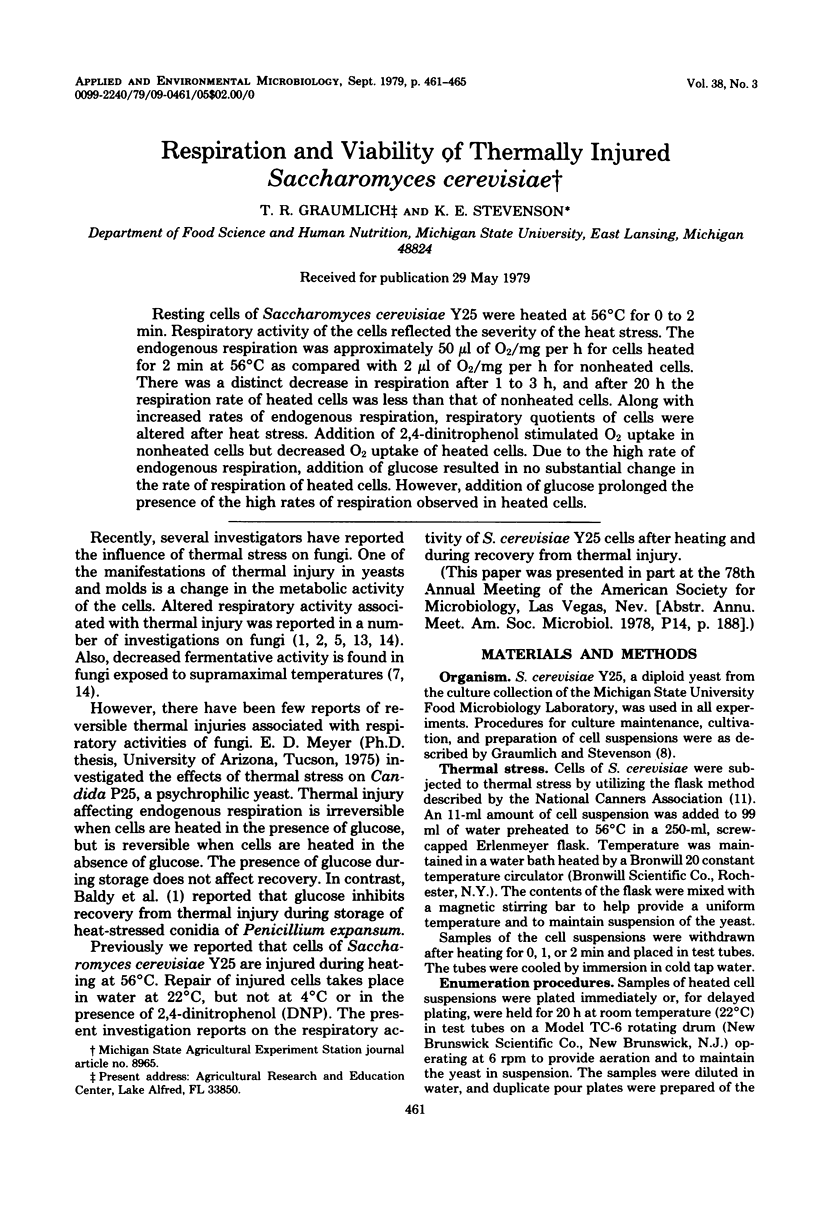
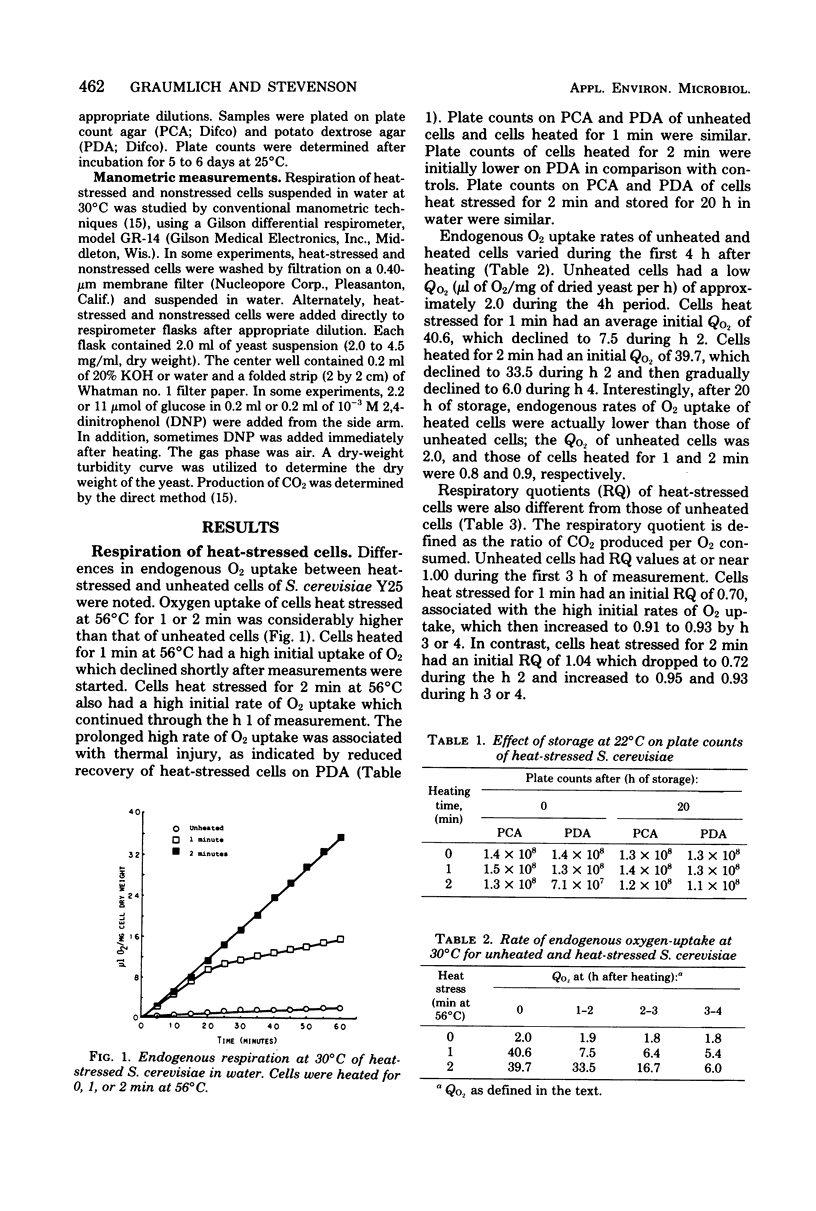
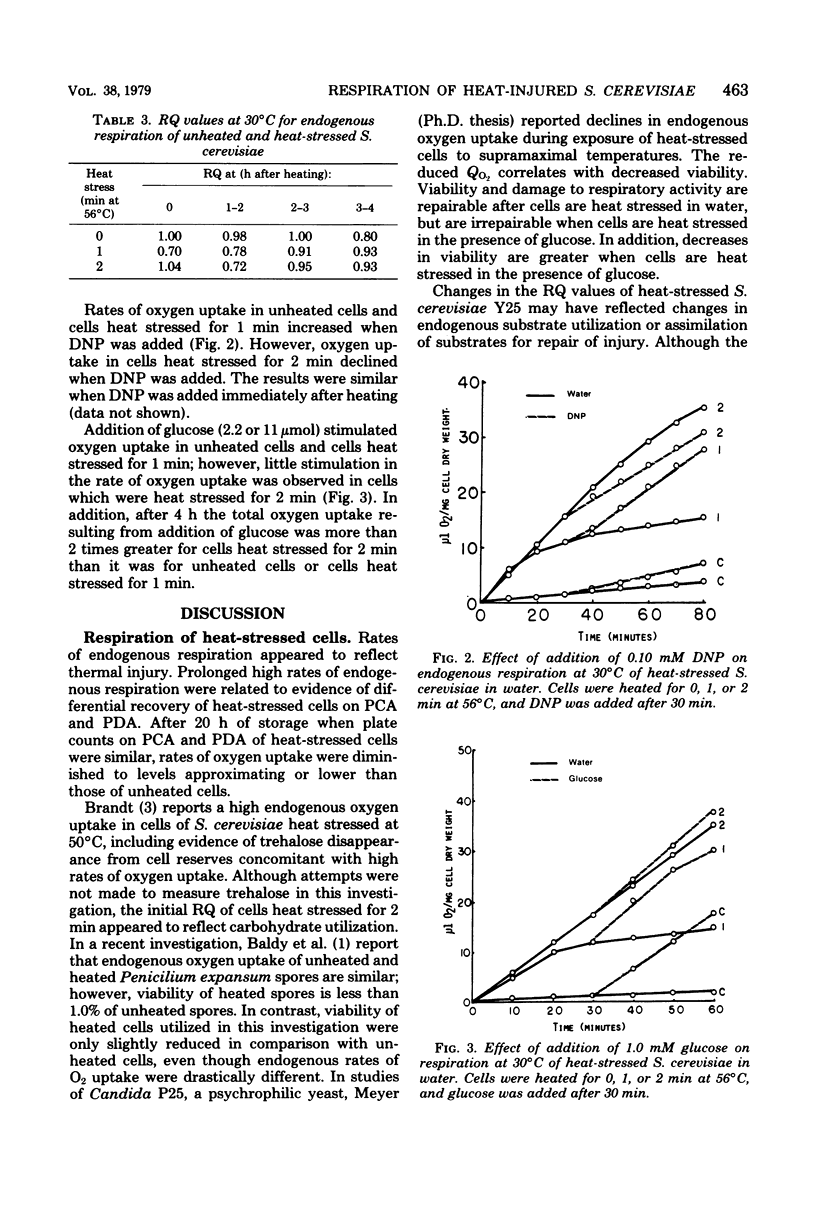
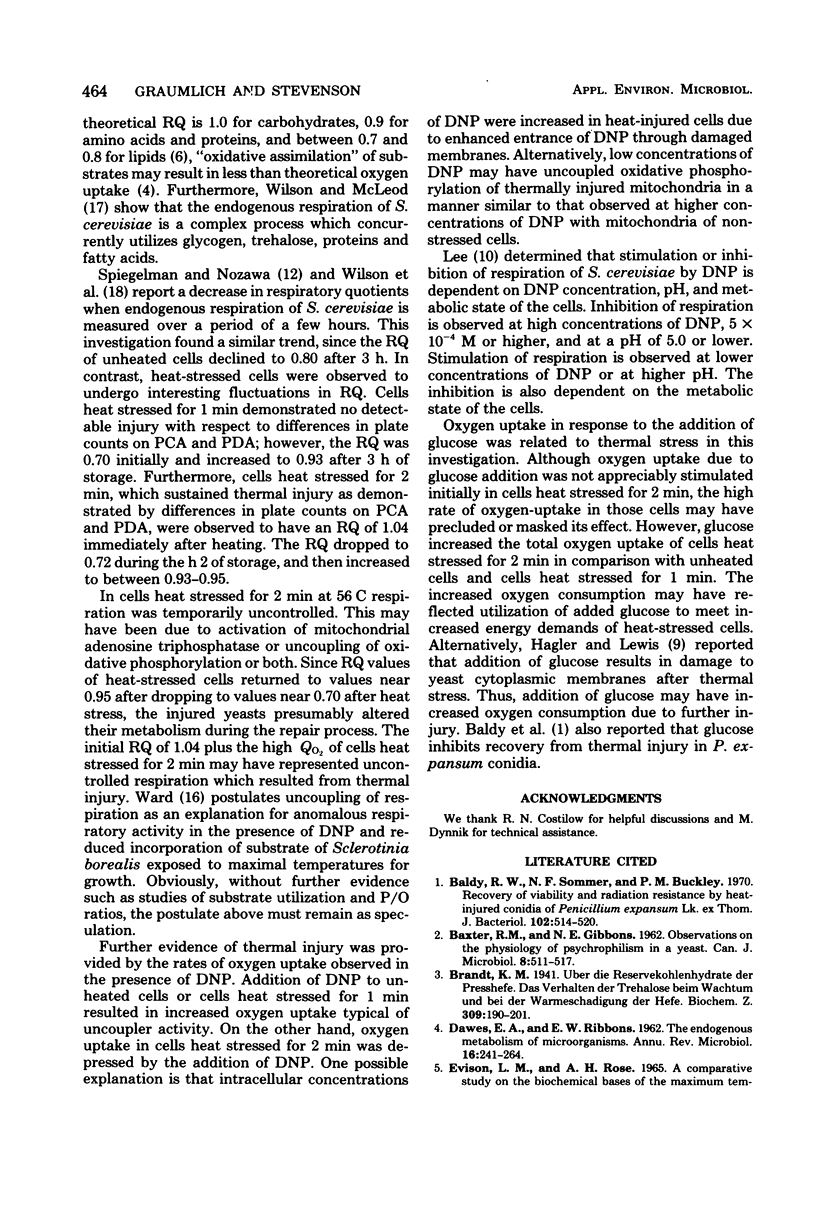
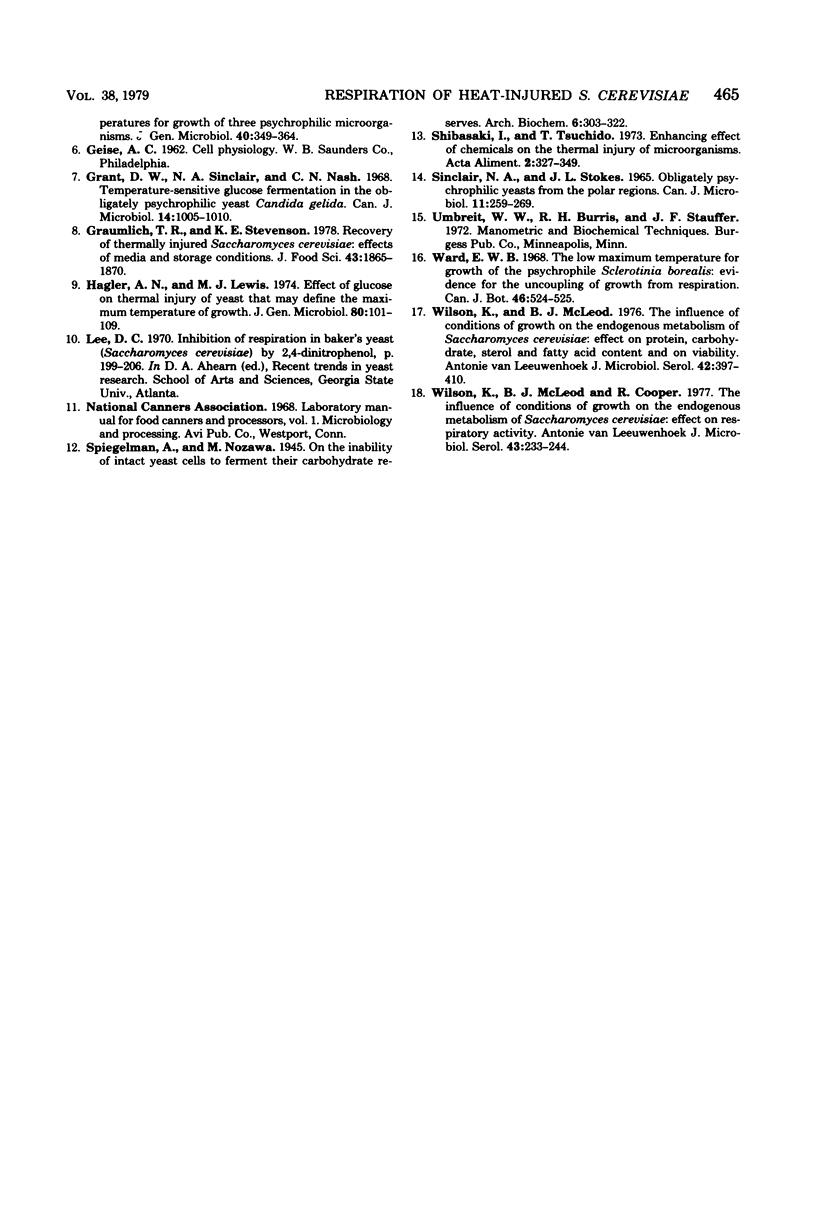
Selected References
These references are in PubMed. This may not be the complete list of references from this article.
- Baldy R. W., Sommer N. F., Buckley P. M. Recovery of viability and radiation resistance by heat-injured conidia of Penicillium expansum Lk. ex Thom. J Bacteriol. 1970 May;102(2):514–520. doi: 10.1128/jb.102.2.514-520.1970. [DOI] [PMC free article] [PubMed] [Google Scholar]
- DAWES E. A., RIBBONS D. W. The endogenous metabolism of microorganisms. Annu Rev Microbiol. 1962;16:241–264. doi: 10.1146/annurev.mi.16.100162.001325. [DOI] [PubMed] [Google Scholar]
- Davis R. S., Hossler F. E., Stone R. W. Metabolism of p- and m-xylene by species of Pseudomonas. Can J Microbiol. 1968 Sep;14(9):1005–1009. doi: 10.1139/m68-166. [DOI] [PubMed] [Google Scholar]
- Evison L. M., Rose A. H. A comparative study on the biochemical bases of the maximum temperatures for growth of three psychrophilic micro-organisms. J Gen Microbiol. 1965 Sep;40(3):349–364. doi: 10.1099/00221287-40-3-349. [DOI] [PubMed] [Google Scholar]
- SINCLAIR N. A., STOKES J. L. OBLIGATELY PSYCHROPHILIC YEASTS FROM THE POLAR REGIONS. Can J Microbiol. 1965 Apr;11:259–269. doi: 10.1139/m65-032. [DOI] [PubMed] [Google Scholar]
- Wilson K., McLeod B. J., Cooper R. The influence of conditions of growth on the endogenous metabolism of Saccharomyces cerevisiae: effect on respiratory activity. Antonie Van Leeuwenhoek. 1977;43(3-4):233–244. doi: 10.1007/BF02313751. [DOI] [PubMed] [Google Scholar]
- Wilson K., McLeod B. J. The influence of conditions of growth on the endogenous metabolism of Saccharomyces cerevisiae: effect on protein, carbohydrate, sterol and fatty acid content and on viability. Antonie Van Leeuwenhoek. 1976;42(4):397–410. doi: 10.1007/BF00410171. [DOI] [PubMed] [Google Scholar]


